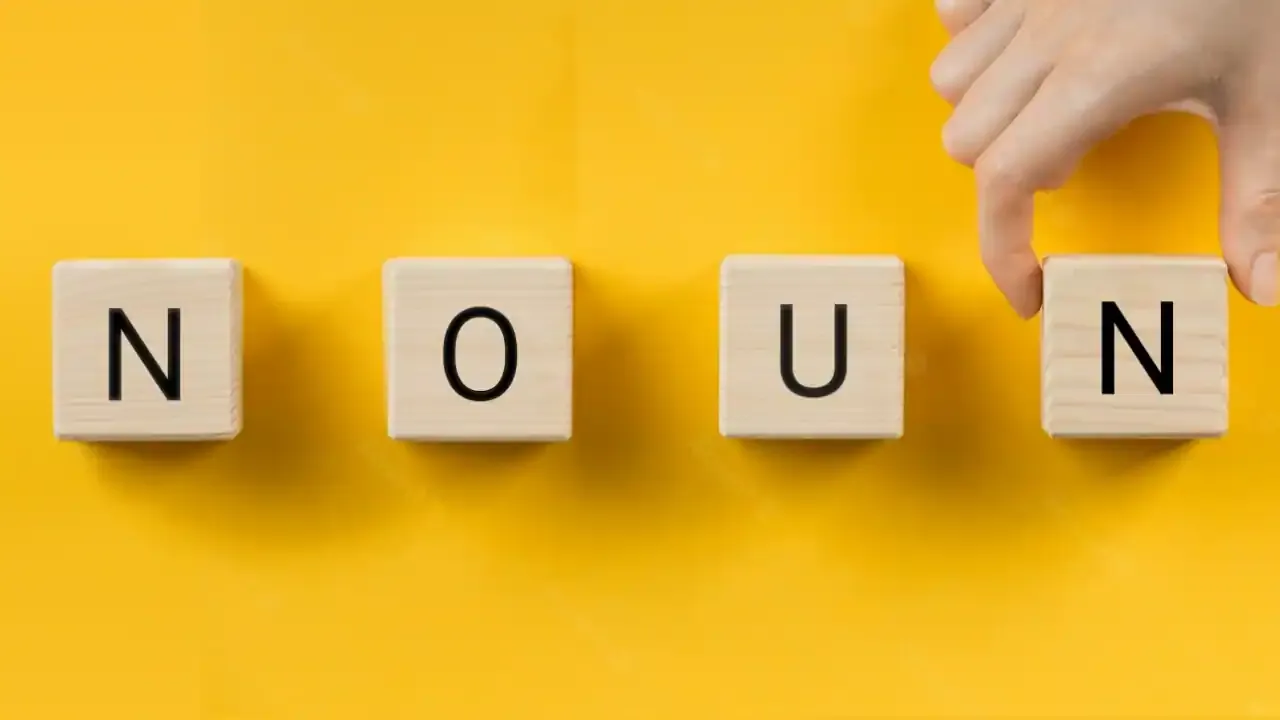A part of speech is a word used in a sentence.
The parts of speech can be divided into eight parts:-
- Noun,
- Pronoun,
- Adjective,
- Verb,
- Adverb,
- Preposition,
- Conjunction,
- Interjection.
What is a Noun?
A noun is a word that denotes the name of a person, thing, place, any animal or anything in the nature.
E.g.- man, table, cow, lion, eagle, Delhi, goodness, kindness, poverty etc.
Nouns are generally classified into two groups -
1. Concrete Nouns
2. Abstract noun.
Concrete nouns are further divided into four groups -
B. Proper noun,
C. Collective noun,
D. Material noun,
On the basis of countability, nouns are classified as –
A. Countable noun &B. Uncountable noun
On the basis of number, nouns are classified as –
A. Singular noun &B. Plural Noun
1. Concrete Noun:
There are many things around us that can be seen, touched, heard, smelt, tasted, or felt with any of our sense organs. The names of those things are concrete nouns.
Like, men, toys, books, pencils, houses, city, buses, cars, flowers, water, air, lights, rays, germs etc.
A. Common Noun or Class Noun:
Anything you see around you is a common noun.
Say any name and it will be a common noun.
E.g. –
Right now you are holding your cell-phone, sitting in a comfortable chair. May be your computer is in front of you. You’re making notes in your copy. There are many books on your study-table.
The sunlight is coming through the window. Your pet cat is staring at a bowl of milk. The gardener is watering the plants outside your room.
All the words in bold font are common nouns.
Similarly, generic names like Men, lions, books , rivers, stones, houses, buildings, streets etc. are also some examples of common nouns.
There are some other examples of common nouns. As each of them are only one in nature, they are often called ‘Singular Noun’.
E.g.— The sun, the moon, the earth etc.
B. Proper Noun:
The word cat is the generic name of an animal. So it is a common noun. But if you name your cat Tom, then Tom is a proper noun.
The name a human being gives to a person or animal is a proper noun.
Some examples of proper nouns are as follows -
Person – Peter, Emma, Brie, Henry, Sid, John etc.
Place – The USA., New York, Ohio, The UK, London and so on.
Religion – The Christianity, The Islam, The Hinduism, The Buddhism etc.
Events – The World War II, The French Revolution, The Industrial Revolution etc.
Books – The Bible, thr Koran, the Geeta.
Always remember that the initials of proper nouns are in upper case (capitalised).
C. Collective Noun:
when you use a word to refer to a collection or a group, that word is a collective noun.
Suppose, you say, “The class is attentive.”
Here, by the word ‘class’ you refer to a number of students in a classroom. So, ‘class’ is a collective noun.
E.g.—
Class, mass, people, folk, race, Peasantry, party, pack, bundle, gentry, clergy, majority and many more .
Use of suitable collective nouns with people and objects:
‘A bundle of sticks’.
– here ‘sticks’ is the common noun. And ‘bundle’ refers to some sticks together. So, ‘bundle’ is the collective noun.
Similar examples –
A school of fish. An army of soldiers.
A heap of garbage. A dozen of bananas.
A flock of sheep. A board of directors.
A bunch of keys. A herd of cattle.
A gang of coolies. A sheaf of paddy.
Here school, army, heap, dozen, flock, board, bunch, herd, gang, sheaf all denote collection or group. So, they are examples of collective noun.
D. Material Noun:-
A material noun is the name of a matter or a substance which something is made of.
For example, the chair that you are sitting in is made of plastic. Plastic is a material noun, and chair is a common noun.
Let’s take another example,
We all wear rings, or will wear on a certain point.
Right?
A ring is a common noun, but gold, which the ring is made of, is a material noun.
Other material nouns are –
Silver, cotton, wool, silk, glass, iron, brass, water, plastic, leather etc.
2. Abstract Noun:
An Abstract Noun is the name of quality, action, state of an object or a person. You can’t touch, see, hear, taste or smell abstract nouns. You can understand them only by your common sense.
Such names of quality, action, state may include –
E.g.-
- Quality: Honesty, purity, humbleness, humility etc.
- Action: Smile, laughter, arrival, departure, approval, control, creation, recovery etc.
- State: Poverty, childhood, innocence, puberty, adolescence, richness etc.
Do you find difficulty in understanding the difference between a proper noun and a common noun?
Here is the solution:
Difference between a Proper Noun and a Common Noun:-
Suppose a person is there in front of you. His name is Alex.
The word ‘person’ is a common noun, because it denotes everyone who belongs to human category.
And, ‘Alex’ is a proper noun, because it is a name attributed to a person by another person. The initial has been capitalized (in upper case).
Countable and Uncountable Nouns:
On basis of their coutnability, nouns are classified into two -
1. Countable noun and2. Uncountable noun
1. Countable Noun:
In your surroundings, there are many living and non-living things that you can count. They are countable nouns.
Like,
Men, women, boys, girl, babies, children, dogs, cats, monkeys, books, pencils, cars, cell-phones, the earth, the moon, the sun, the stars...
The stars?
Yes, you can count the stars, you can count one star, two stars, three stars, seven stars, but not all the stars that have been twinkling in the night sky since the time unknown.
Remember, countable nouns have two forms - singular and plural.
2. Uncountable Noun:
The things around you that you cannot count are uncountable nuns.
Examples -
All liquid or viscous substances –
Oil, water, milk, tea, coffee, honey, curd etc.
Some solid substances – salt, sugar, sand, floor, cheese, meat, stone, information, equipment, garbage, intelligence and so on.
Remember, uncountable nouns are always singular.
Singular and Plural Nouns:
I. Singular Noun –
The singular number of nouns denotes one single living or non-living thing. While the plural number of nouns denotes more than one of them.
Examples –
A boy, a girl, a man, a woman, a child, a baby, a cat, a dog, an elephant, a book, a mango, a dish, a fox, a leaf, an apple, an umbrella etc.
II. Plural Noun –
Plural nouns denote more than one loving or non living things.
Examples:
Two boys, eight girls, many children, three cats, ten mangoes, a number of books, foxes, leaves, men, women.
There is one more type of nouns, that is –
Compound Noun:
Two or more words often form a single noun with a singular meaning. They are known as compound nouns.
Examples:
Washing machine, running track, toothpaste, fireflies, eggroll, blackboard, full moon, step-brother, step-sister, mother-in-law, commander-in-chief, handful, mouthful, spoonful and many more.
We frequently use this words in our daily conversation. Isn’t it?
Alright.
That’s all for now.
Hope you liked our article on noun and its classifications.
Visit again.
Thank you...






%20(1).webp)


%20(1).webp)
2 Comments
Thank you for a great lesson.
ReplyDeleteYou're welcome, visit again.
DeleteLeave a comment